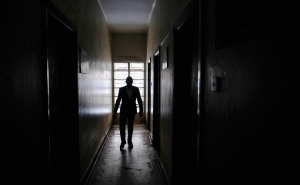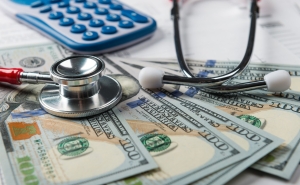The Fight for a Swimmable Harbor in Baltimore City
A look at how a coalition of activists, organizations, agencies, scientists, and residents came together to start restoring Baltimore’s iconic waterway.

In 2010, a coalition in Baltimore set an audacious goal: Make Baltimore’s Harbor swimmable and fishable by the year 2020.
The tidal region of the Patapsco River, the Harbor has one of the deepest channels on the East Coast. It cuts so far inland, it’s closer to the Midwest than any other eastern port, making it ideal for huge ships carrying international goods which then fan out across the U.S. on trains and trucks. Until the 1970s, inland industries dumped toxic chemicals into the Harbor, and today, whenever it rains, stormwater choked with trash and sewage flushes into the water. There’s little remaining natural shoreline and a lack of marine flora and fauna to filter and refresh the water.
It’s not something you’d envision swimming in.
But in June 2024, more than 150 people, including elected officials like Mayor Brandon Scott, donned life jackets and jumped off a pier in Fells Point for Harbor Splash, the Harbor’s first public swim in 40 years.
The story of how Baltimore’s Harbor became swimmable—at least for a day—spans nearly 15 years and involves activists, community organizations, agencies, scientists, and residents. A special episode of the Public Health On Call podcast looked into four ways the Healthy Harbor Initiative became a reality: garnering public attention, collecting data, mitigating sewage, and battling trash.

A “No Swimming” sign on the waterfront near the Canton neighborhood of southeast Baltimore. Photo: Lindsay Smith Rogers, Johns Hopkins Bloomberg School of Public Health
Catching the Public Eye
When Adam Lindquist first joined the Waterfront Partnership of Baltimore in 2011, he faced a daunting task: Sell the vision of a swimmable Harbor to the people of Baltimore.
“It really struck me that the waterway was seen as off limits, or toxic. Like, if you touched it, it would melt the flesh off of your hand,” he says. So, convincing people that the Harbor could be cleaner started with reminding them of what it once looked like.
That work began with a pilot project creating floating wetlands. Christopher Streb, an ecological engineer with Biohabitats, which was contracted for the project, calls them “ecological prosthetics” that mimic the natural vegetative shoreline.
Streb and his team constructed the “wetlands” from bottles collected from the Harbor, stuck between panels of plastic netting and held together around the edges by cedar planks, “like a Hot Pocket of plastic bottles.” To give Baltimore youth hands-on experience with the project, they enlisted students from the Living Classrooms Foundation to help with assembly. They planted the panels with native Spartina grasses and hibiscus and set them afloat.
The wetlands “grew like crazy,” Lindquist says, and attracted microorganisms like mud crabs, bristle worms, and grass shrimp. Soon, fish appeared to munch on those, and then birds gathered to eat the fish.
The panels only covered about 2,000 square feet—a postage stamp floating in a swimming pool. But the wetlands were brimming with life and parked along the waterfront where people could see these “floating reefs,” as Streb called them. The structures became so inundated with aquatic life, in fact, that after a few years they had to be retired because mussels and barnacles were pulling them underwater.

Based on the initial floating wetlands technology, the National Aquarium has built a new generation of floating wetlands in the Inner Harbor. Photo: Hitomi Kuromoto, Johns Hopkins Bloomberg School of Public Health
Another project that’s helped galvanize public support is the Great Baltimore Oyster Partnership to grow oysters off piers and docks in the Harbor. The baby oysters, or “spat,” grow in cages for nine months before being released into Harbor where they act as natural water filters. Area businesses “adopt” the cages, and volunteers come out in droves to help care for the spat, which Lindquist termed “oyster gardening.”
“[It was] super engaging to the public and, to this day, we can’t provide enough volunteer opportunities for the level of interest there is in caring for baby oysters in the Baltimore Harbor,” he says.

Photo: lovro77/E+ via Getty Images.
From Numbers to Action
Alice Volpitta is a Waterkeeper—“sort of like a watchdog”—with Blue Water Baltimore, a nonprofit dedicated to water quality restoration. Her work includes monitoring the Harbor’s health through data surveillance, and then translating that data into policy recommendations.
“We take measurements of things like nutrient content, dissolved oxygen levels, [and] bacteria,” Volpitta says. But collecting that data is just the first part. Next is, “how can we translate these numbers into actionable indicators to tell us where we’ve gone wrong and where we’re moving in the right direction?” she says.
An important metric for the Harbor’s swimmability is bacteria. Eric Schott, an associate research professor at the University of Maryland Center for Environmental Science, notes that water quality monitoring looks for Enterococcus, an “indicator bacteria” that points to the presence of fecal matter, or sewage—and the accompanying pathogens that can cause acute gastro-intestinal illnesses and infections.
For more than a decade, Blue Water Baltimore has tracked bacteria levels in the Harbor and surrounding tributaries. Their reports have triggered major policy recommendations and calls to action—because sewage in waterways points to a much larger problem: infrastructure deficiencies.

A storm water drain in the Fells Point neighborhood of southeast Baltimore. Photo: Lindsay Smith Rogers, Johns Hopkins Bloomberg School of Public Health
The Sewage Pipe Problem
Like many old U.S. cities, Baltimore is built on top of an aging, complex network of pipes that carry clean water in and wastewater out of homes and other buildings. These pipes are prone to cracking over time, says Natalie Exum, an assistant professor in Environmental Health and Engineering. They then leak sewage into groundwater, which flows into the Harbor.
Baltimore is also plagued by sanitary sewer overflows, which, Exum says, typically happen when stormwater stresses this ancient system to the point that sewage can “shoot off into creeks or straight into open water bodies like the Harbor.”
Replacing the pipes is a logistical nightmare that involves ripping up roads and sidewalks. It’s also very expensive, says Exum, which is why this work “oftentimes gets deprioritized over the years.”
Baltimore City is currently under a consent decree with the Environmental Protection Agency that started in 2002 and holds the city accountable for wastewater infrastructure deficiencies. A 2024 Healthy Harbor report by the Waterfront Partnership indicates that some efforts are underway: “DPW has been repairing and upgrading key portions of the city’s sewer infrastructure” through the construction of two storage tanks at one of Baltimore’s main treatment plants. These tanks help keep sewage and rainwater from flowing into the waterways that lead to the Harbor and, as a result, “sewer overflows into the Baltimore Harbor have dropped by 84% or more than 240 gallons over the last four years.”
Volpitta says the difference is measurable in their data: “We’ve seen a really encouraging trend, which is that bacteria levels in general are getting better for our local waterways.”

Mr. Trash Wheel is a trash wheel interceptor installed at the mouth of the Jones Falls where it meets the Inner Harbor. Photo: Wikimedia Commons
The Battle Against Trash
John Kellett used to walk to work every day along Baltimore’s waterfront. Sometimes, he says, “it looked like you could literally walk across the harbor on the trash.”
The trash is at its worst after rainfall flushes litter down storm drains and into the natural water sources that feed the Harbor. Kellett, an environmental scientist, observed the flow of trash and started thinking about how to build a catchment system at key entry points. And Mr. Trash Wheel was born.
Kellett invented the “trash wheel interceptor” that was installed at the mouth of the Jones Falls in the spring of 2014. It looks like a giant snail with a water wheel on one side and a gaping “mouth” with a conveyor belt that pulls trash out of the water and into a dumpster. On top are two giant googly eyes that Lindquist built in his basement and added for “flair.” He also named the device and is responsible for Mr. Trash Wheel’s online presence, which has garnered thousands of global fans.
There is now a fleet of interceptors at key points around Baltimore’s Harbor, and every year they prevent thousands of pounds of trash from entering the waterway. After big rain events, a single interceptor can fill up to 12 dumpsters in a day.
Data collection from the content and volume of trash has spurred legislation. Early on, Kellett says, styrofoam was a major problem and the data helped advocates lobby for a styrofoam ban that cut the number of cups and takeout containers by nearly 80%. Now, interceptor data are informing proposed legislation around plastic bottle collections and proper disposal of cigarette butts.
Kellett acknowledges that stopping trash from getting into the Harbor is not the solution to its litter woes. “The ultimate answer is to do upstream efforts that keep it from getting into the water to begin with.”

Kayakers use a newly-installed launch in Fells Point. The kayak launch is part of the Waterfront Partnership’s new Blueway initiative to make the Harbor not only cleaner, but more accessible for recreation. Photo: Lindsay Smith Rogers, Johns Hopkins Bloomberg School of Public Health
Harbor Splash 2024: Just the Beginning
Floating wetlands and baby oyster nurseries, data monitoring, infrastructure repair, and quirky trash-scooping machines have all been pieces of the Healthy Harbor Initiative. There’s measurable progress.
But is the Harbor really swimmable?
It hadn’t rained in Baltimore for several days leading up to the June 23 Harbor Splash event. Water quality testing the day before at Bond Street Wharf in Fells Point revealed an A+ rating for bacteria, so the event was given the go-ahead by water quality monitors.
Adam Lindquist, Christopher Streb, Eric Schott, and John Kellett all eagerly jumped into the Harbor at the event. Alice Volpitta and representatives from Blue Water Baltimore did not.
Volpitta and her team look at a wide range of data points to determine the health of waterways, including nitrogen, phosphorus, and chlorophyll levels—many of which point to “resiliency factors.” Whenever it rains, trash and pollution get washed into the water, and for 24–48 hours afterward the chemical balance is disrupted. How quickly a waterway can filter what gets flushed in is a major indicator of that water’s quality of health. Volpitta has seen major gains across many of these resiliency factors, but “we still have a long way to go to create a greener, spongier city that isn’t so heavily impacted every time it rains.”
Water quality testing also takes 24 hours. So even if the water quality was an A+ the day before the event, something could have happened in the interim. In short: Baltimore’s harbor may be swimmable in perfect conditions, but the technology lag and the Harbor’s lack of resiliency after rainfall or sewage leaks mean its water quality is still highly unpredictable.
“Blue Water Baltimore’s position is that what we really need to be doing is acting quicker to give us more swimmable days that are disconnected from whether or not it’s rained,” Volpitta says.
“I think the swim event was a call to action,” she adds. “So instead of seeing it as the finish line, I would love for people to see it as a vision of what can be more days than not.”
Lindsay Smith Rogers, MA, is the producer of the Public Health On Call podcast, an editor for Expert Insights, and the director of content strategy for the Johns Hopkins Bloomberg School of Public Health.




